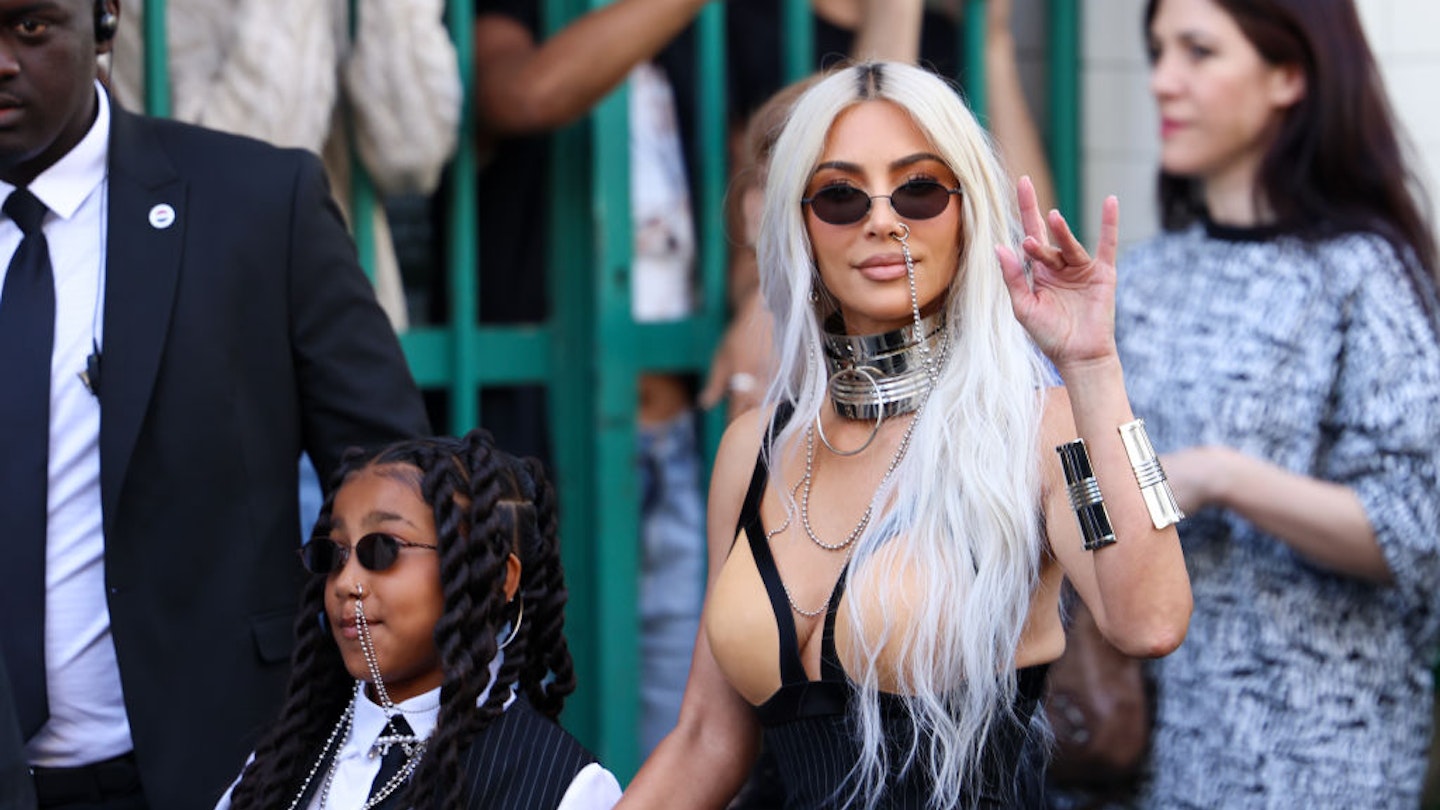The world of piercings is plentiful, there's everything from cool stackable ear piercings to nipple piercings, but if you've ever thought about getting your nose pierced, at least one, if not all of the questions below will have crossed your mind. And as with all body piercings, it's important to do your due diligence before taking the plunge. Without further ado, here's everything you need to know about nose piercings.
What Are Nose Piercings?
A nose piercing can appear in various places, but the most common areas are the nostrils or septum. If you pierce the nostrils, it's likely you'll opt for a stud or ring on the left or right side of your nose, but if you go for the latter your jewellery will most likely be in the form of a ring or hoop hooked through your septum. But there are other jewellery types too including L-shaped studs, closed hoops, ball-closures, labrets and barbells.
Sarah Crowe, head piercer at luxury piercing parlour Laura Bond in Edinburgh, says, 'Typically a nose piercing is done through one of your nostrils. However some people have double nostril piercings. Or one on each nostril or septum piercing or high nostrils. At Laura Bond we pierce mostly nostrils and septums.
As well as nostril andthe ever-cool septum piercings there are also a variety of other options to choose from: double nostril; mantis; septril; nasallang; bridge; and rhino. The list goes on, which may be surprising given the noses's delicate and focal feature nature.
How are nose piercings performed we hear you ask? Crowe explains, ' We use a needle to pierce noses - a nose piercing should never ever be done with a gun. The piercing is performed by pushing a sterile needle through the nostril or septum cartilage and then fitting the jewellery.'
What You Should Know Before Getting A Nose Piercing
It may not seem like risky business but there are certainly a few things to consider before getting a nose piercing.
At establishments such as Laura Bond, clients are offered a free consultation, which we highly recommend ahead of treatment. This involves holding different jewellery against the nose to show people what the piercing will look like. Recommendations based on anatomy, style and lifestyle factors are also provided at this time.
Before committing to the piercing and studio, it is also recommended that you visit a reputable parlour. Crowe advises such establishments 'should have their piercers licences displayed on the wall in a place that is easy to see. They should also be able to answer any questions about jewellery quality, the sterilisation process and their experience. If they are at all rude about sharing this or they can’t give you this information then run a mile. The same goes if anyone suggests piercing with a gun.' It's important to go to a highly skilled piercing specialist to avoid any risk of infection.
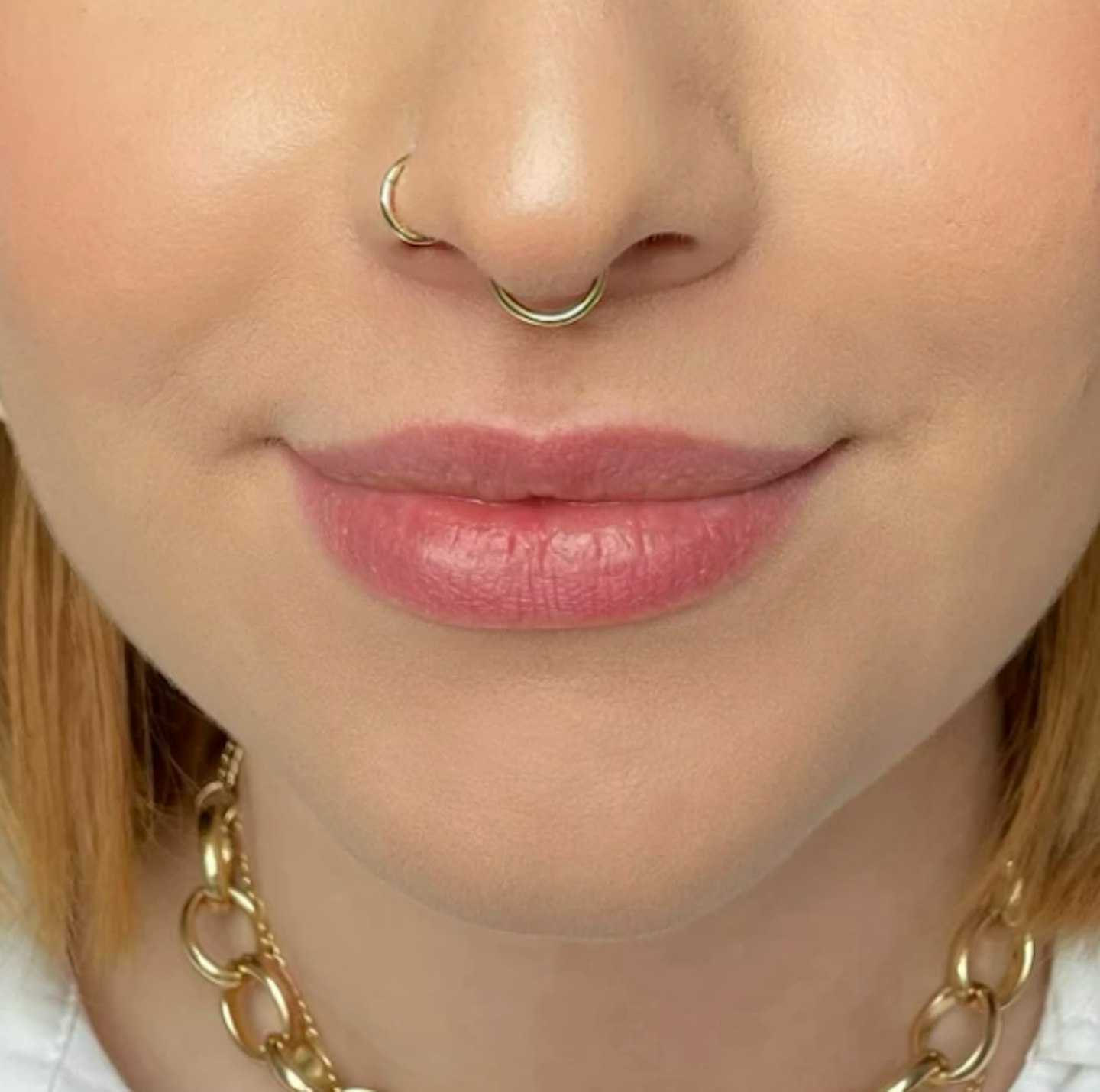
Do Nose Piercings Hurt?
Yes it does, although how much depends entirely upon your pain threshold, of course. The plus is that, like most body piercings, the process is over fairly quickly. But still, a bar of metal is being pressed through your nose so a sharp pain (and maybe some eye watering) is to be expected.
'Pain is subjective but most people tell us that it’s no more painful than getting a wax. Nose or septum piercings do make your eyes water though,' says Crowe. Additionally, Crowe elucidates, on getting the piercing you can initially expect some bleeding, localised swelling, tenderness and bruising.
What Are The Best Tips For Nose Piercing Healing?
During the healing process, Crowe warns you can expect some discolouration, itching, secretion of a white straw coloured fluid (not pus) that will form some crusts around the jewellery. As such, cleaning your piercing until it is fully healed, which can take up to nine months, is paramount. To clean thoroughly, Crowe says, 'use a sterile saline spray to clean your piercing morning and night. Do this no more than twice a day. Moisture can lead to bacteria, so dry the area well with a sterile non-woven gauze or using the cold setting on a hairdryer.'
Nose Piercing Aftercare Rules
As for aftercare, there are a roster of helpful guidelines. Firstly, remember a piercing is an open wound and dirty hands or fingernails can transfer bacteria, so wash your hands thoroughly before cleaning your piercing and limit touching it all together. Second, do not remove your jewellery during the healing process as this will begin to close the piercing immediately, avoid turning or rotating your jewellery, and - as tempting as it may be for some - do not pull or pick the dried matter around the wound as it is attached to the healing tissue. Thirdly, be cautious of what comes into contact with the piercing – steer clear of using chemicals to clean it, refrain from applying body lotion, perfumes, or moisturisers directly atop of it, and avoid swimming in chlorinated pool water or freshwater lakes as your piercing heals.
A top tip from Crowe? During the healing process, 'use a travel pillow and suspend your ear in the centre opening while you sleep.'
Do Nose Piercings Get Infected Easily?
First off, the signs of infection are redness, swelling, pain, discharge from the piercing site and bumps. If you have these symptoms, bathe your piercing in a saltwater solution several times a day and, if they don't improve or get worse, book an appointment with your GP. Also, avoid wearing make-up on your nose as this may further irritate the piercing.
Dr Sonia Khorana, GP and dermatology expert, adds, 'I would recommend a saline solution to keep the area clean, twice a day. If it gets infected - you need to go see a doctor. You might need to remove the piercing jewellery for healing. Topical or oral antibiotics may also be needed depending on the severity.'
What Do I Do About A Bump On My Nose Piercing?
Nose piercing bumps are non-permanent scar tissues that occur, often when you catch the nose piercing on things by mistake. The tissue is disrupted and a lump appears. As soon as it does, start cleaning the piercing with saltwater solution until it subsides. It shouldn't leave a scar once it's healed, but if it's there for longer than a month, it's worth visiting a doctor in case it's infected.
How Much Is A Nose Piercing?
It totally depends on where you have it done. For example, Maria Tash charges £35 for a nostril piercing, but it's worth remembering that this doesn't include the price of the jewellery. Crowe says, 'at Laura Bond piercings are £30 for the service and our solid 14k gold jewellery is separate from that. It starts at £70 for a stud.' The dual costs are something to bear in mind, though this would be a one-time cost until you are ready for a new piece of jewellery.
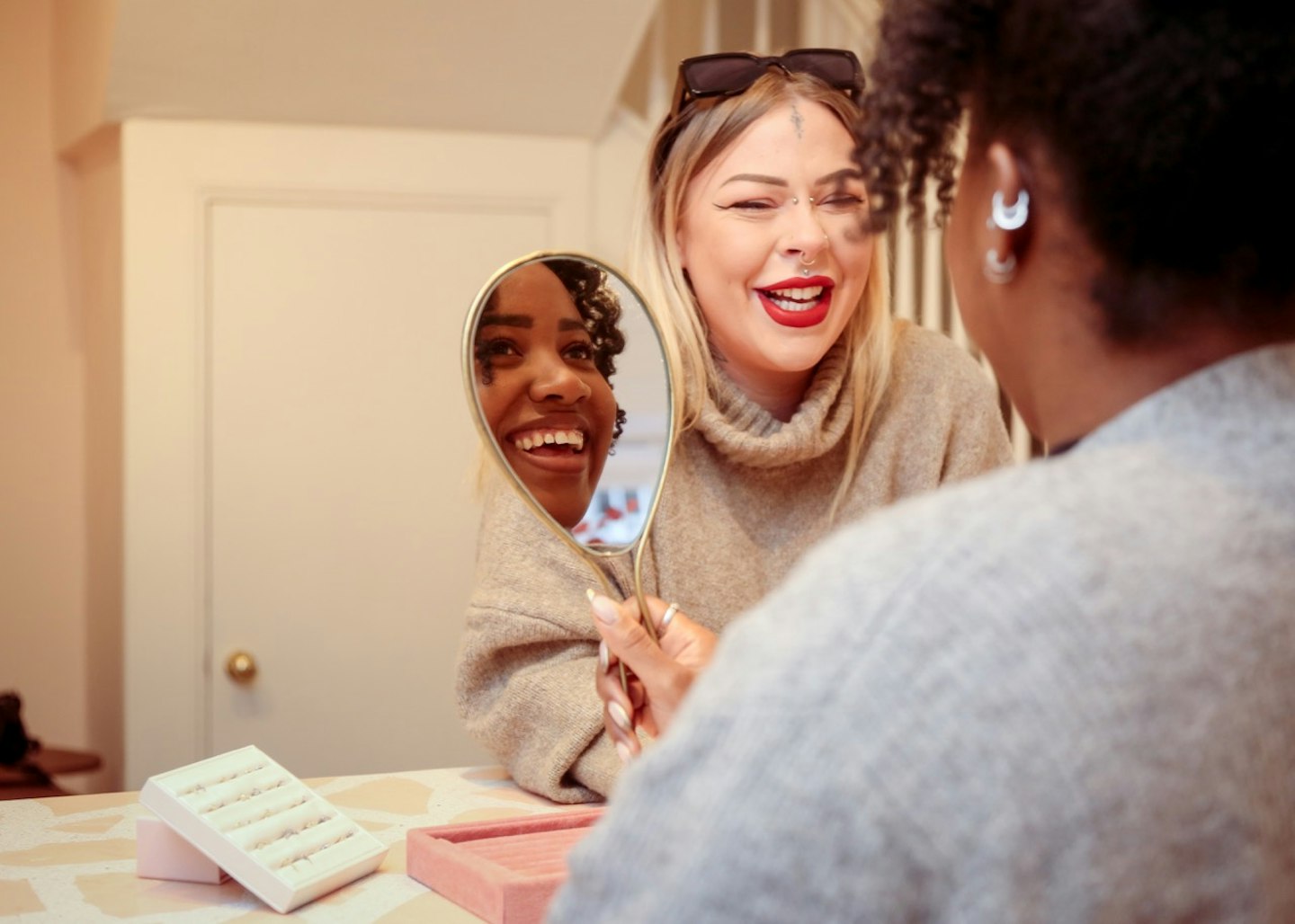
What Jewellery Material Is Best Suited For Nose Piercings?
Crowe says, 'We always recommend solid 14k gold, not only is it one of the safest metals to pierce with, it’s beautiful and will last a lifetime.' It is durable and available in a variety of colours, like yellow, white or rose, it is also hypoallergenic meaning it rarely triggers reactions and is suitable for individuals with sensitive skin. Think of it as minimal risk jewellery.
Alternatively, silver is a brilliant secondary option but make sure it is pure as lower grade materials like sterling silver usually include a percentage of other alloys which may contain allergenic compounds.
Titanium is often regarded as the most prestigious material as it is hypoallergenic, anti-microbial and pure, as it is never mixed with other metals. Given the placing of this piercing, which Dr Khorana identifies as 'harbouring a lot of bacteria', it is important to opt for a good quality material that will prevent infections and the spread of bacteria.
Metal compounds to avoid if your skin is sensitive and prone to allergies include nickel, copper, cobalt and chromium, which can often be mixed into non-pure materials.
What Jewellery Style Is Best For Nose Piercings?
At Laura Bond, nostrils are pierced with solid 14k gold internally threaded labret stud – a stud with a flat back and a screw in front that sits snug to the nose and is extremely comfortable. Laura Bond's threaded jewellery is secure so you also don’t need to worry about knocking it out or losing it.
Once it’s healed, Crowe explains, 'you can switch to a hoop, we recommend waiting at least 6 months and getting a piercer to fit it the first time so that you can get the best advice about size and fit.'
Is A Nose Piercing Worth It?
Beauty is in the eye of the beholder, but a lot of people have nose piercings so there must be something to them, right? Having said that, if you've reached the end of this article and have made up your mind to never get a nose piercing, you can always 'cheat' with faux septum piercings.
SHOP: The Best Nose Rings And Studs
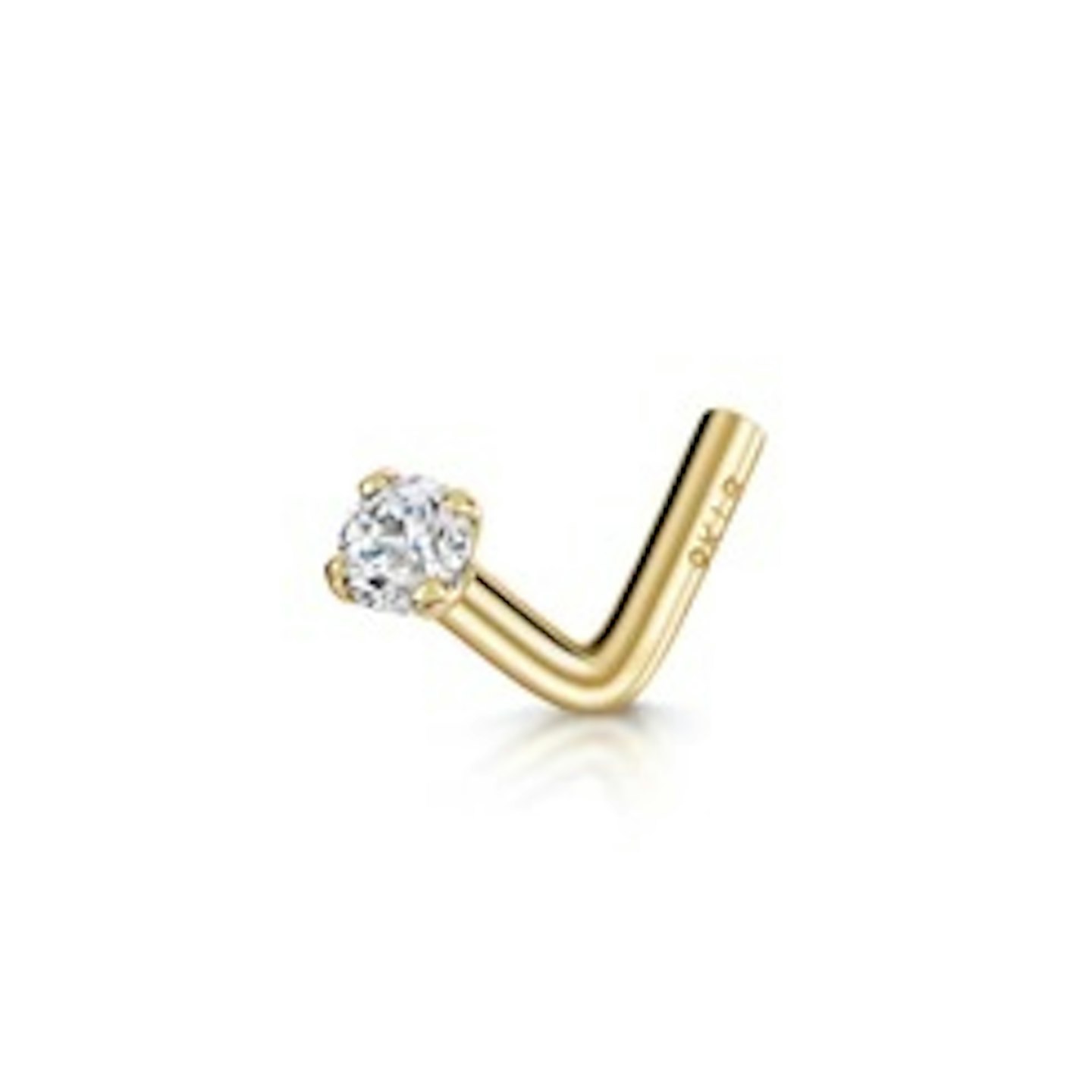
www.laurabond.co.uk
This responsibly sourced solid gold is nickel-free and features cubic zirconia crystals for a delicate finish.
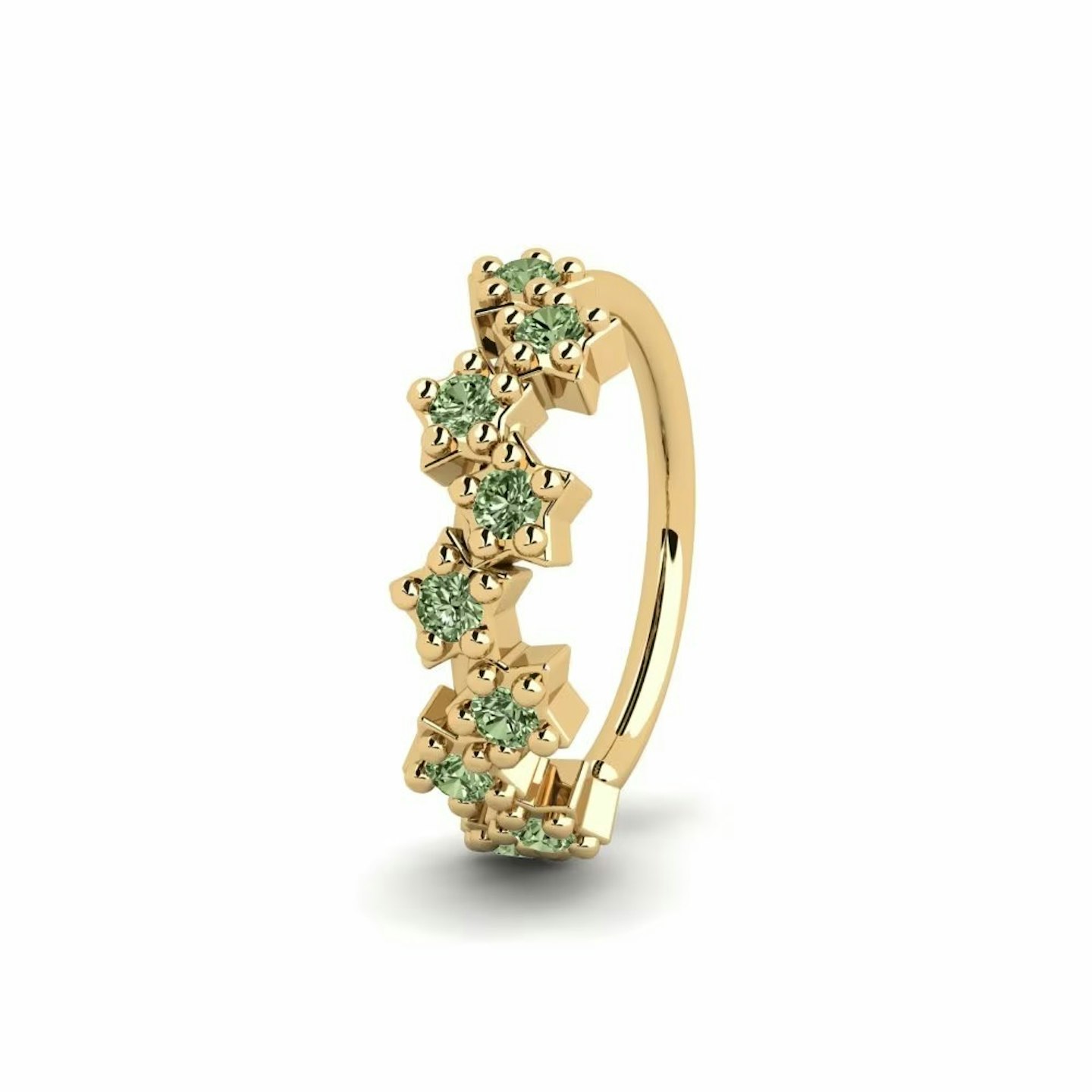
www.glamira.co.uk
If a good quality hoop is what you're after, this 14k yellow gold green diamond encrusted ring is a solid fit.
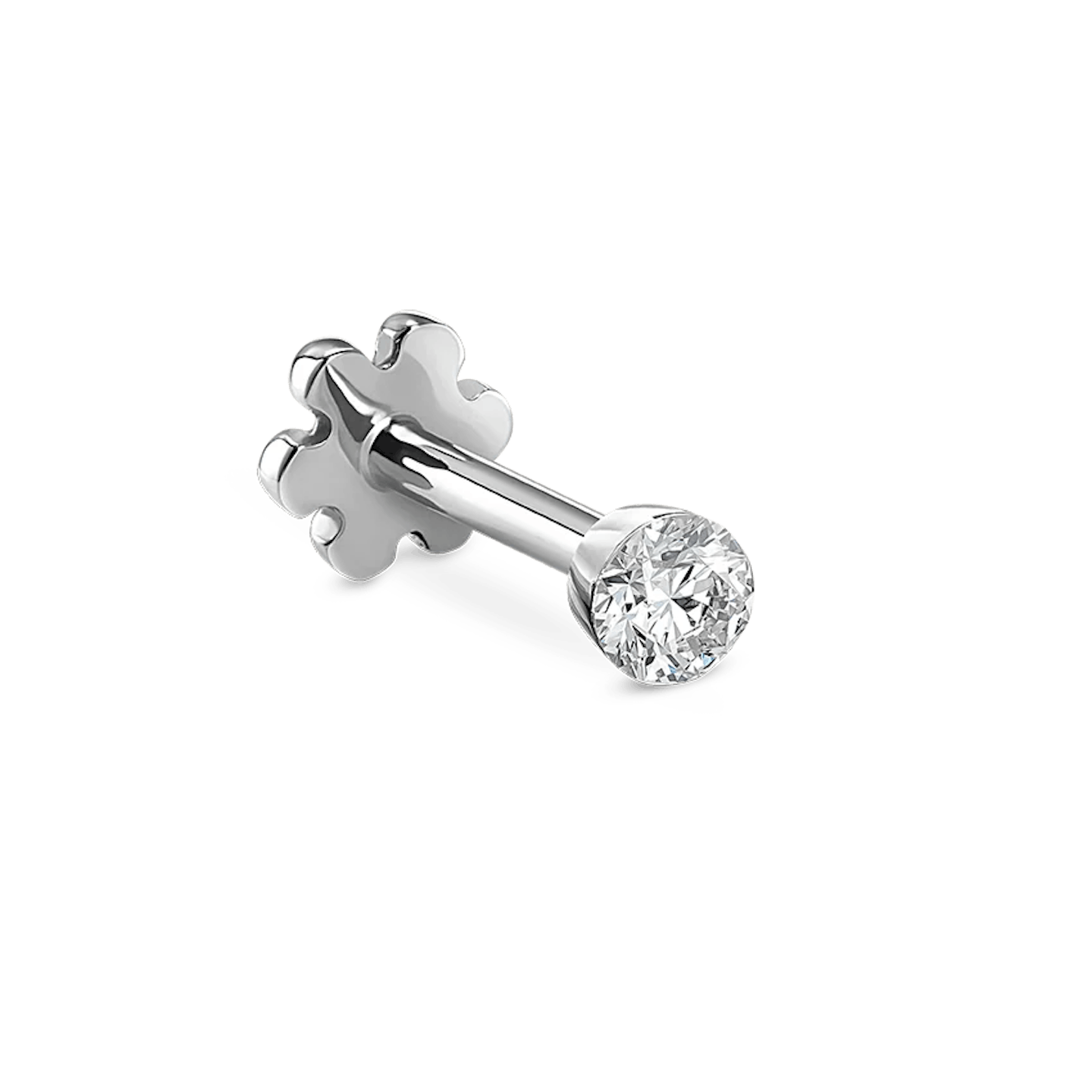
www.mariatash.com
After a more subtle look? This white gold, round diamond is a perfect choice, not least because it is nickel-free and hypoallergenic, too.
Sameeha Shaikh is Grazia UK's Beauty Writer, working across all categories to bring you insights on the latest trends, industry news and the products you need to know about, viral or not (most probably viral).
